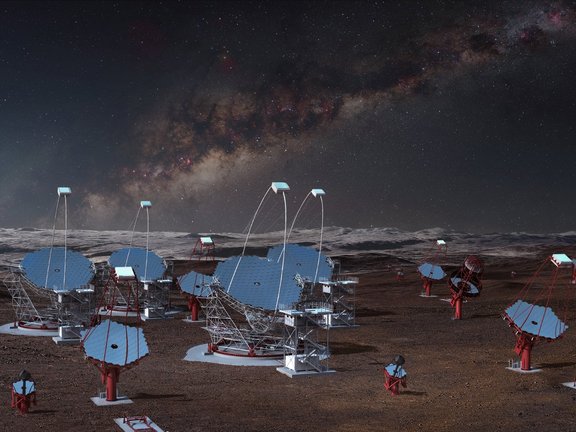The CTAO Board of Governmental Representatives has now submitted the formal request to the European Commission to establish a European Research Infrastructure Consortium. The prerequisite for this was that full funding commitments for construction and operation of the CTA observatory had been received from the main participating states, including Germany. Extensive documents had to be submitted for the application, including the cost book and scientific and technical description, including the contributions of the individual consortium members. CTAO ERIC will replace CTAO gGmbH as the legal entity and will oversee the construction and operation of the observatory. Commission approval is expected in the first half of 2023. This will mark the official start of the CTA gamma-ray observatory.
MPIK has been involved from conception of the CTA project, with Prof Werner Hofmann serving as Spokesperson of the collaboration from the very beginning. MPIK is committed to deliver major elements of CTAO, in particular Cherenkov Cameras for the southern site in Chile and software elements of the observatory.
Together with several European partner institutes, the MPIK has developed a novel camera type called FlashCam, which is designated for implementation in medium-sized CTA telescopes of the southern array. The central functional elements of FlashCam are a photon detector plane and digital high-speed read-out electronics, which are both designed in a highly modular manner. Since October 2019, an advanced FlashCam prototype camera is installed in the central H.E.S.S. telescope and routinely used for astrophysical observations. The camera performance has been extremely stable and reliable.
The small-sized CTA telescopes (SSTs), which will only be built at the southern site, will have a dual-mirror optical design. This results in compact telescopes with good image quality and a large field of view. An international team lead by MPIK is developing a novel camera for the SST. The SST Camera will feature a curved focal plane to match that required by the telescope optics, which is approximated by tiling the camera with identical photosensor modules consisting of silicon photomultipliers.
MPIK has contributed significantly to software developments for CTA, including simulations of the telescope arrays to achieve an optimal configuration. In addition, there are software packages for data volume reduction, data processing and quality control, as well as the open-source software Gammapy, written in the Python programming language, as CTA's official analysis software. This project was initiated by MPIK scientists and is now being continued by an international community.
As part of an international team, MPIK scientists will be hard at work in Chile and remotely for the next years, commissioning the CTA South telescopes and working to ensure the optimal performance of the Southern Array, ready for the first scientific results.
